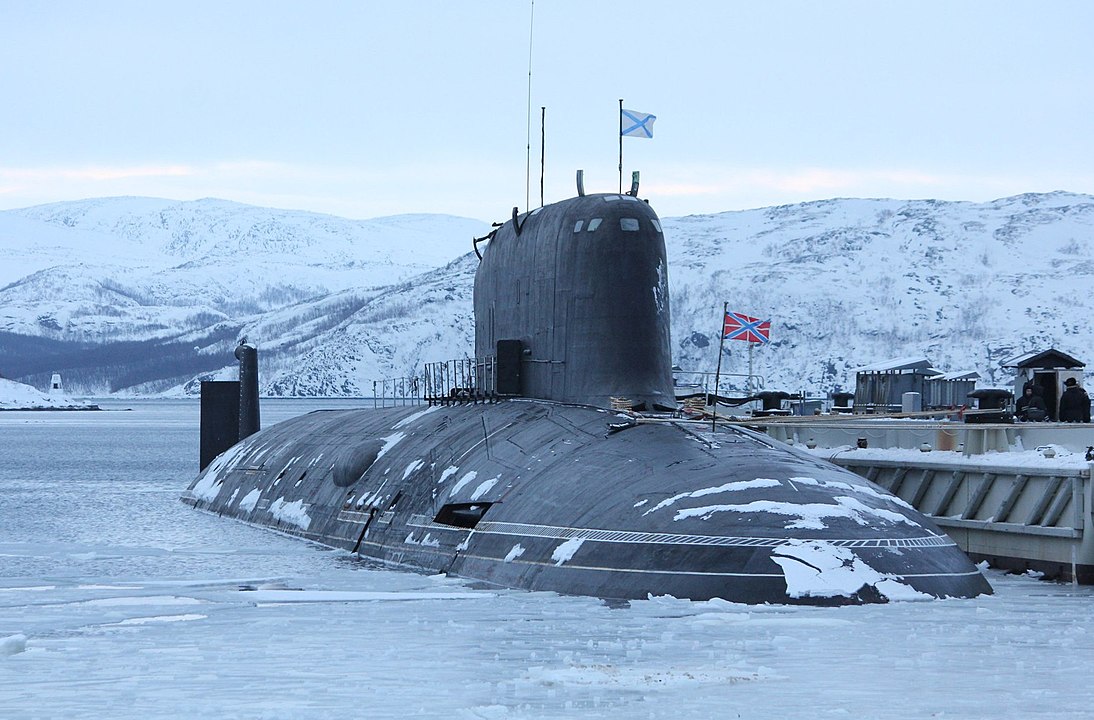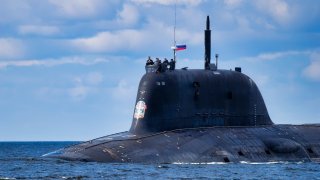Russia's Yasen-M Class Submarine: Now Armed with Hypersonic Missiles
Russia is planning to enhance its naval capabilities by equipping its Yasen-M class nuclear submarines with the advanced Zircon hypersonic missiles.
Summary: Russia is planning to enhance its naval capabilities by equipping its Yasen-M class nuclear submarines with the advanced Zircon hypersonic missiles. This development is significant considering the setbacks Russia's naval fleet has faced during the Ukraine conflict, including the loss of about a third of its Black Sea fleet. The Yasen-M submarines, successors to the original Cold War-era Yasen class, are known for their stealth and formidable weaponry, including cruise missiles and a new fourth-generation nuclear reactor. The addition of Zircon missiles, capable of reaching speeds of Mach 9, could substantially increase the threat level from these submarines. However, ongoing economic and resource challenges posed by the war in Ukraine could complicate Russia's ability to implement these upgrades.
Russia to Arm Yasen-M Submarines with Zircon Hypersonic Missiles Amid Naval Setbacks in Ukraine
Russia is reportedly allocating funds to equip its new nuclear submarines with hypersonic missiles.
Last summer, the head of Russia’s largest shipbuilder announced that the Zircon missile will be incorporated on the Yasen-M, the leading class of Russian submarines. Considering how poorly Russia’s naval fleet has fared during the country’s invasion of Ukraine, this capability could be a game-changer for the Kremlin.
Kyiv claims its forces have sunk or disabled about a third of all Russian warships in the Black Sea since February 2022. In September, Ukraine confirmed it had successfully wrecked Russia’s Rostov-on-Don submarine during a missile attack in occupied Crimea. While the feat is noteworthy, Moscow’s underwater capabilities are still quite formidable, and its subs are arguably far more durable than its surface vessels. The potential introduction of Zircon-carrying Yasen submarines should worry Ukraine and Western officials.
Introducing the Yasen-Class
Russian officials prioritized their inherited fleet of submarines after the Soviet collapse in the 1990s. The Yasen class was first conceptualized during the Cold War, but the lead ship did not complete construction until 1993. The submarine class was conceptualized by Malakhit, a merger of two design bureaus.
Funding issues halted the Yasen class’ progress, and when Moscow returned to the project in the late 2000s, new technologies had rendered the initial design obsolete. Instead of nixing the project altogether, though, Russian officials opted to relaunch the submarine class under a new “Yasen-M” designation. This new name came with specific design modifications that made the class relevant once more.
The Severondvinsk, the lead ship of the Yasen class, finally commissioned in 2014. The Kazan (K-561) followed suit and was commissioned in 2021, succeeded by the Novosibirsk (K-573) and Krasnoyarsk (K-571). The next boat planned to enter service with the Russian fleet is the Arkhangelsk (K-564). Seven additional submarines could join the class down the line.
Specs & Capabilities
Each submarine has a submerged displacement of 13,800 tons and can reach a top speed of up to 35 knots. The upgraded variant is shorter, includes enhanced onboard electronics, and runs on a new KTP-6 reactor designed to minimize the submarines’ noise levels. According to reports, the reactor’s cooling loop facilitates a more natural circulation of water that does not require the constant operation of main circulation pumps, which tend to be extremely noisy. The Yasen ships are the first to be equipped with a fourth-generation nuclear reactor, which reportedly has a quarter-century-long core life and will not need refueling.
In terms of armaments, the Yasen submarines are well-equipped. Each submarine features 10 silos for vertically launched cruise missiles, in addition to Kalibr-PL and Oniks cruise missiles. The Kazan is also incorporated on the submarines, which can operate the UKSK (3P-14B) vertical launch system, composed of 8SM-346 modules.
Now, Russian state-run media claims that the submarines will arm the advanced long-range Zircon hypersonic cruise missile. Designated by NATO as SS-N-33, the 3M22 Zircon is perhaps Moscow’s most threatening new weapon.

According to the Kremlin, the weapon can reach a top speed of Mach 9.0. Alexei Rakhmanov, chief executive officer of the United Shipbuilding Corporation, recently told RIA that, "Multi-purpose nuclear submarines of the Yasen-M project will ... be equipped with the Zircon missile system on a regular basis.”
While the prospects of Russia’s Yasen-M submarines being equipped with Zircon missiles is concerning, the economic reality of the venture is murky. After more than two years of war in Ukraine, Moscow’s funds, manufacturing abilities, and other resources are depleted. It is unlikely that Russia has the means to complete this modification while the war rages on.
If these hypersonic missiles are incorporated onto the Yasen submarines, it will give a huge boost to Russia’s naval strategy.
About the Author: Maya Carlin
Maya Carlin, National Security Writer with The National Interest, is an analyst with the Center for Security Policy and a former Anna Sobol Levy Fellow at IDC Herzliya in Israel. She has by-lines in many publications, including The National Interest, Jerusalem Post, and Times of Israel. You can follow her on Twitter: @MayaCarlin.


